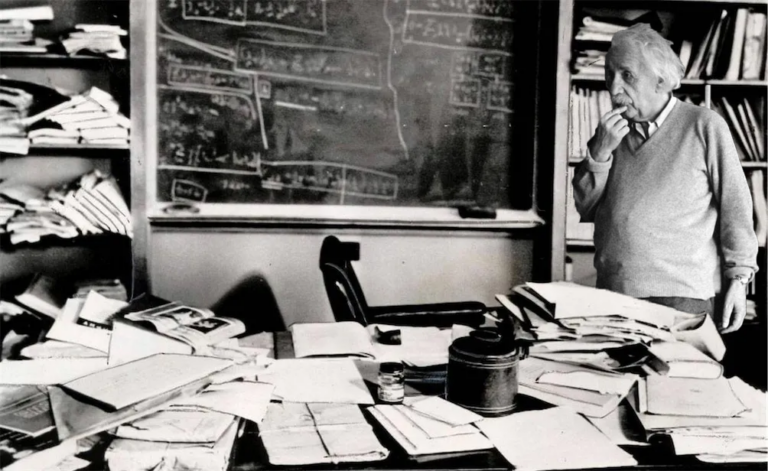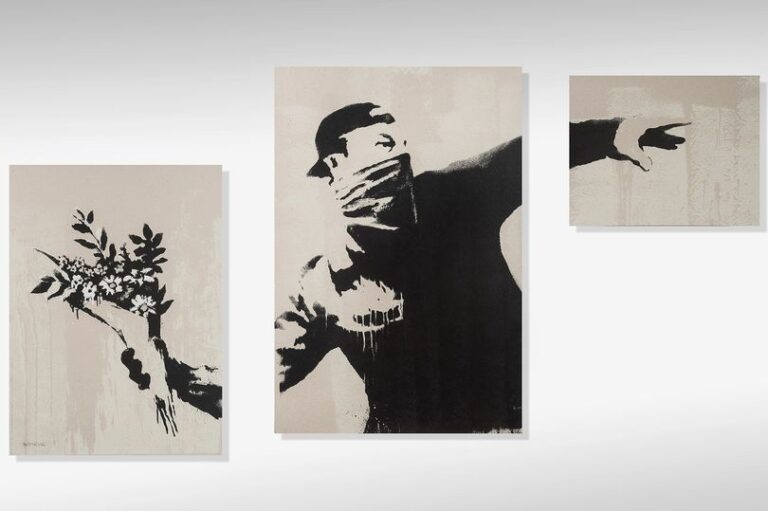
What was your best talent as a child? Probably your ability to be messy. Don’t laugh just yet. Why was this your best talent? Because when you are in a messy state you allow for the freedoms necessary to accelerate and maximize your creative nature.
Messy is not uncaring, as many adults would suggest, it is one’s ability to get lost in the wonders of creativity, inventiveness, exploration, experimentation, and discovery. It is also one of the best places to learn how to imaginatively connect unlikely things in order to create something profoundly new.
When your thinking is not regimented, you’re able to explore divergent lines of inventiveness, offering new insights and ideas that come from all possible sources.
When you give yourself permission to draw outside the lines, write on walls, fill the floorboards with wads of discarded papers all with the intent of discovering something new, you allow your imagination to flourish.

When you are in your messy state, you bend things that don’t bend, create new shapes and colors, and walk down unexplored pathways.
You’re like God, wherein the canvas is blank, and you get to design and create anything you desire; a new animal, a brand-new flower, redesigning the planet, creating a new color. Anything. And you do this because you are allowing your intuitive side to be openly messy, playful, and explorative.
Finger painting, papier-mâché, crayons, working with clay, and sketching with charcoals, are all fun because they allow for a free, open environment where there is no right or wrong, only experimentation, and discovery.

When there are no rules there is no right or wrong. And because of this, you actually become bolder in your choices and ideas.
One of the coolest things about being messy is that there’s no ego involved because you cannot create when you are in an ego state. When ego is around, it limits one’s ability to explore and the willingness to fail or be wrong. And when we are messy, being wrong is absolutely okay, because we are in an experimentally creative state.
Messy simply means not editing oneself, and not worrying about order. You are not disobeying the rules of conformity, conventionality, logic, or reasoning, you’re not being uncaring, selfish, or disobeying, you are putting rational notions aside for something else, something cool. It’s why Einstein and people like him were thought to be so forgetful. He wasn’t bothered with where he put his pipe, if he remembered to put on clean clothes, or when was the last time he ate. He wasn’t absentminded or forgetful because his brain was failing him, instead, he was lost in creative, imaginative, experimental thought.

His mind wandered, fantasized, explored, and played. He used imagery to dissect, investigate, and pull apart ideas, and he did this with a childlike fascination of wonderment and discovery.
He wasn’t hindered or bothered by things like time, organization, or rational thought. This freed him to expand his curiosity, intuition, and imagination. His thoughts didn’t always have conclusions; instead, they remained open to unlimited possibilities.
Friedrich Adler, who was very close to Einstein, noticed that “in all practical things he is absolutely impractical.” To the outside observer, Einstein’s dress and habits were shocking, while his absentmindedness gave rise to his humorous stories and amazing thoughts and ideas.
In order to get in touch with your messy side, you need to learn to let go of what bothers you. Why does it bother you? Is it a belief you’ve adopted? If so, how is it serving you? Research has found that people with messy desks are linked to higher salaries, and a 2013 study by scientists at the University of Minnesota found that those with messy desks were more prone to creative thinking and risk-taking.
Typically, at this stage of an article, I’d provide you with a set of tools that you can use to enhance your intuitive genius. Today, I want to offer you an experiment.
Have you ever heard of the Paperclip Exercise?

This is a simple and fun test. I want you to take about 5-10 minutes to come up with as many ways as you can, to use a paperclip. How many ways can you use them? Be imaginative. Be bold.
Go ahead and start and we’ll talk about the results.
PUT THIS ARTICLE DOWN AND REALLY TRY TO
COME UP WITH AS MANY DIFFERENT IDEAS AS YOU CAN.
[PAUSE 5-10 minutes.] [READY TO COME BACK?]
Okay. You should know that most people can come up with about 10-15 different ways to use a paperclip. But it might interest you to know that geniuses can come up with hundreds of ideas.
So, before we continue, can you think of some more?
(It’s okay… I’ll wait…)
Are you ready for a clue? What if the paperclip was a different size? What if it was made out of a different material, say sugar, glass, or foam-rubber? What if it could float? What if it was 200 times its usual size? What if it was hollow inside?
Now, how many more creative ways could you come up with to use a paperclip?
Fun, right? That’s how these Disruptors think all the time.
When you allow yourself to be messy, you allow yourself the freedom to think wildly, boldly, whimsically, and imaginatively. Think about how authors of children’s books think. They are imaginative and do things in an unconventional way.
A talking cat with a hat? A sleeping giant? A wizarding young boy? A talking spider? A pipe-smoking caterpillar? A giant peach? Dogs that race in cars? Anything is possible when you draw outside the lines, and don’t sensor or criticize yourself. You are just playing, imagining, experimenting, and discovering.
When we are in our rational mind, we don’t always see things that should seem obvious. Sherlock Holmes was famous for pointing this out. He talked about the dog that didn’t bark, or the raindrops that weren’t there.
For example, do you know about the hidden symbol in the FedEx logo? You may or may not, but it’s obviously there. Take a look at this image and see if you can find it. And I promise, that once you do, you’ll never be able to unsee it.

Messy is an important part of who you are. Society and rational thinking tell us that we don’t have the time to play, and rational thinkers rarely see the benefits of this practice of the messy mind.
Yet we keep hearing about the advantages and the massive successes of those individuals who allow themselves the freedom to explore their messy side.
But here’s the most important thing to consider if you ever hope to become highly successful or a true disruptive genius.
You cannot devote just a small fragment of your time to your intuitive-creative side and hope it will yield reward. That won’t get you there. To find out what you’re really capable of, and to reach your maximum potential, you’ll need to trust in your ability to develop and foster your intuitive mindset.
When it comes to rational thinkers, they see the problem with accessing your more creative mindset as something that doesn’t immediately show financially lucrative results, and therefore, deem it to be a luxury of ungrounded thinking, and for that reason, creative should come second to rational thought.
But let me remind you of something you are already aware of. Rational thinking offers no guarantees either. You can still be fired from a secure job at any time. Having a degree, following a set of guidelines, and playing it safe is no better guarantee of success any more than what creative people do to achieve their success.
And here’s the interesting thing about creative endeavors. When they are successful (and there is no absolute formula for what that is), they are ten times more profitable than a sound rational business.
In fact, let’s go even deeper. Most businesses were built on someone’s imaginative idea that only later became viable businesses; Coca-Cola, Apple, Microsoft, Virgin, Oracle, Google, Facebook, TikTok, Twitter, Tesla, the Harry Potter empire, the Marvel Comics empire, etc.
And two, (and here’s the irony), a highly successful rational, pragmatic, person with a strong six or seven-figure income, who has worked hard to get where she or he is today, may want to own a Banksy painting someday, created by a non-degreed artist (who initially had no proven track record), that sold for millions of dollars more than that executive makes.

Banksy – The Flower Thrower – 2003
I am not suggesting quitting your job tomorrow. But I am suggesting that someone like Jeff Bezos, who had a secure well-paying job in the financial sector, left to pursue his more messy, ungrounded, intuitive idea.
If we shift the paradigm, as Einstein suggested, and make intuition the stronger gift while giving some latitude to rational thinking (but no longer making it the dominant style), then I believe we would have more opportunities and benefits overall.
There was a time, not so long ago, when incubators and accelerators were showing us that new creative thoughts and ideas could yield highly profitable results, and so, we began encouraging and fostering this type of thinking in younger children. The problem is that we did this because we wanted a big monetary return for their efforts. That kind of results value thinking places a lot of pressure on these children to create at a higher level.
Instead, we should be devoting energy and focus on developing a creative consciousness within every child to choose for themselves which endeavor (rational or creative) they want to pursue. If we don’t provide the choice, we limit them and ultimately our own progress and opportunity.
Creativity is both important and necessary to our development, as are intuition, imagination, and wonderment. And, except for what nature has provided, nothing in this world exists until someone imagines and creates it. We applaud those people we deem as genius, the gifted artists, musicians, athletes, inventors, or creators. We all want to discover their secrets and unique genius gifts, so we too can figure out how to access our own genius potential.
The answer is simple. Put your rational mind on hold and go explore. Explore your crazy thoughts, your whimsical ideas, and your ungrounded and unfounded imaginative pursuits.
Let your hair down. Don’t judge, second-guess, criticize, or compare yourself to others. Your gifts and talents are unique only to you and no one else. And if you haven’t been in touch with your messy, creative side for a while, then I suggest these options…
1: Go play with a four-year-old and look at the world through their eyes.
2: Travel outside of your city and comfort zone. Find out what the world has to offer you.
3: Let your hair down, and as Dr. Wayne Dyer use to say, follow Rule #6: “Don’t take yourself too seriously.” And by the way, he said there are no rules 1-5.
Now go be messy.